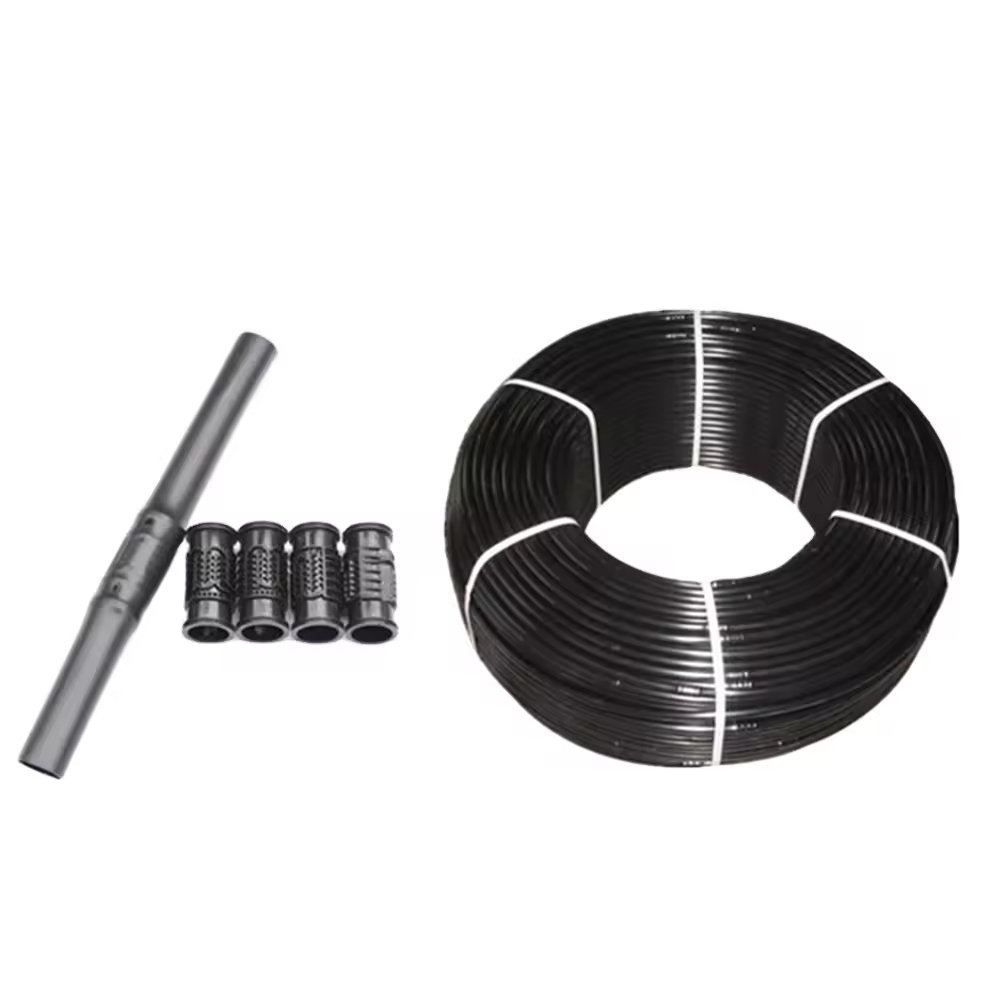

In the context of global climate change and water scarcity, the shift in agricultural irrigation methods has become increasingly urgent. Drip irrigation tubes, as an efficient irrigation technology, are gaining widespread adoption worldwide. They deliver water directly to the plant roots, enabling precise irrigation and significantly improving water resource efficiency, helping farmers achieve higher agricultural outputs with limited water resources.
The advantages of drip irrigation tubes are clear. First, compared to traditional flood and spray irrigation methods, drip systems can deliver moisture directly to the root zone, reducing evaporation and leakage losses. This can increase water utilization efficiency to over 90%. This efficiency not only conserves precious water resources but also provides new opportunities for agricultural development in arid regions. Studies have shown that fields using drip irrigation systems tend to have faster crop growth and higher yields than those using conventional methods, particularly during water-scarce seasons.
Secondly, drip irrigation effectively controls moisture, promotes uniform crop growth, and reduces the risk of soil salinization due to over-irrigation. This precise water management helps maintain soil health and meets the specific moisture needs of crops at different growth stages, optimizing growing conditions. Additionally, the use of drip systems can decrease the incidence of pests and diseases, as controlled soil moisture can inhibit the growth of certain pathogens and pests, thereby reducing the need for pesticides and fertilizers and promoting sustainable agriculture.
In practice, drip irrigation tubes are widely used in a variety of sectors, including fruit trees, vegetables, and grain crops. Farmers can adjust the water quantity and frequency of irrigation based on crop growth stages and weather changes, allowing for flexible irrigation. This flexibility not only enhances crop yields and quality but also lowers production costs, especially in areas where water resources are scarce or water prices are rising. Furthermore, drip systems can be integrated with fertilizer application, enabling fertigation, which provides precise nutrient delivery and further enhances crop productivity and quality.
As technology continues to advance, drip irrigation systems are evolving as well. Smart irrigation control systems are becoming increasingly prevalent, allowing farmers to monitor soil moisture and weather data in real-time via mobile applications, optimizing irrigation decisions. This intelligent management not only improves the scientific basis of irrigation but also lays the foundation for agricultural modernization. For instance, emerging sensor technologies can provide real-time feedback on soil moisture levels, automatically adjusting irrigation frequency and water quantity to ensure crops remain in optimal growing conditions.
Additionally, drip irrigation technology is environmentally friendly. By reducing water waste, drip systems alleviate pressure on groundwater and surface water resources, helping to maintain ecological balance. Moreover, drip irrigation can effectively prevent soil erosion and protect soil structure, promoting sustainable land use. Many countries and regions are recognizing this and beginning to support the promotion of drip irrigation technology through policies, encouraging farmers to invest in modern irrigation systems.
Conclusion: Drip irrigation tubes, as a crucial tool in modern agriculture, leverage their efficient use of water resources and precise crop management, becoming the preferred irrigation method for many farmers. In the face of escalating water resource challenges, promoting and popularizing drip irrigation technology will significantly contribute to sustainable agricultural development. Effective water management not only enhances crop yields and quality but also paves the way for environmental protection and rural economic growth. The future of drip irrigation technology is promising, driving agriculture toward a more intelligent, sustainable, and efficient direction.